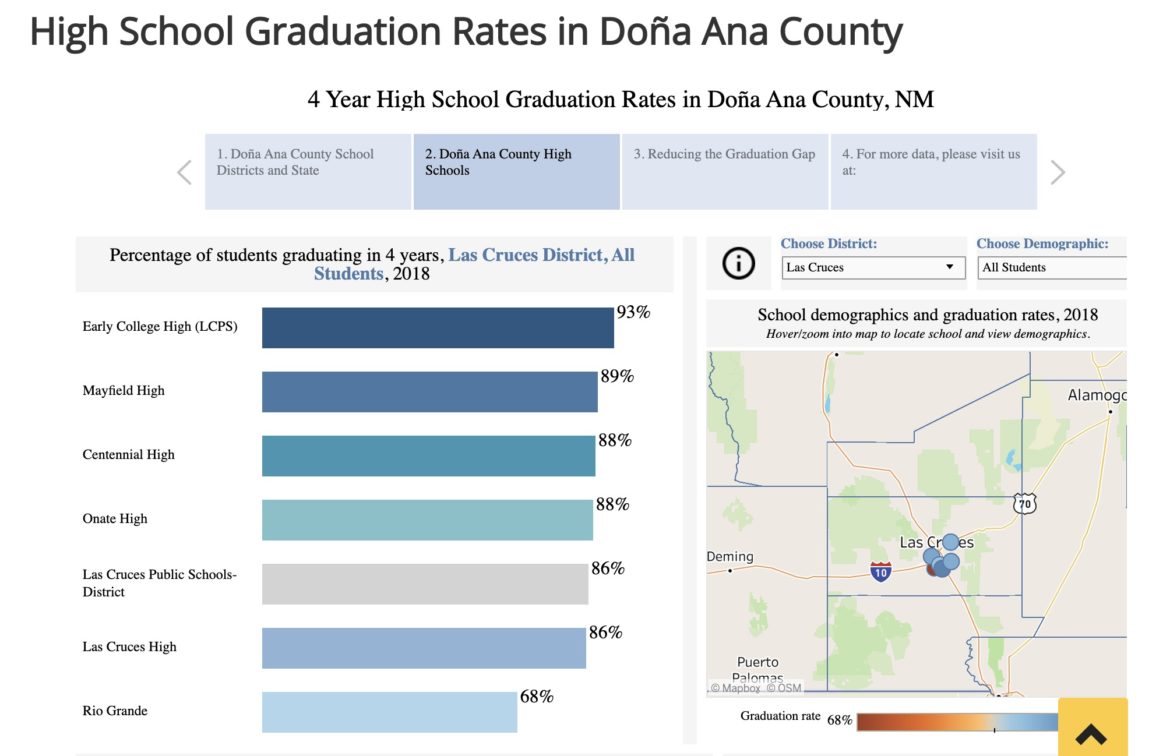Things are looking better for students with disabilities at Las Cruces’ Mayfield High School. Since 2012, graduation rates for those students have risen from 59% to 81%. That compares to an increase for all Mayfield students from 76% to 89% over the same period, and 70% to 74% for all students statewide.
Parents in Doña Ana County can explore those numbers and more on a dashboard created by the Center for Community Analysis at New Mexico State University. The data was compiled by Program Manager Erica Surova, who launched a new Data Newsletter in early January.
The center’s mission is to strengthen the ability of community advocates in southern New Mexico and the borderland region to access data to better target their work. It’s initial focus has been on early childhood education and community well-being. Older data dashboards on the center’s website from 2018 address those topics.

Surova said her newsletter, which will publish every other month, aims to spread awareness about education equity and family well-being in Doña Ana County and New Mexico. While the data concentrates on southern New Mexico, the work the center is doing offers insights on the kind of data available across New Mexico and how it can inform statewide issues.
For her first newsletter, Surova analyzed graduation rates for the three districts in the county against statewide numbers. Her dashboard allows viewers to compare graduation rates by factors such as race, disability and income status, and at particular high schools. In nearly all cases, she found the gap between students appears to be shrinking over time. For instance, at the Las Cruces Public School District, the graduation gap between Hispanic and white Non-Hispanic was 16% in 2012, but had shrunk to 5% in 2018.
“My hope is that by lifting up important statistics, education/health/well-being/early childhood advocates will be better informed about what is happening related to education and well-being, and they can use that to inform their work,” Surova said in an email.
She sees the dashboards and newsletters as a jumping off point for analysts at local school districts, the Public Education Department and media to dive into issues emerging from the center’s data analysis.
“The newsletter may not give you all the answers. In fact, it will probably raise more questions, but this is what we need to do, self-reflect a little bit more and ask if what we are doing is really working and, if not, what can we do to change that?,” she said.
You can sign up for the center’s email newsletter here.
